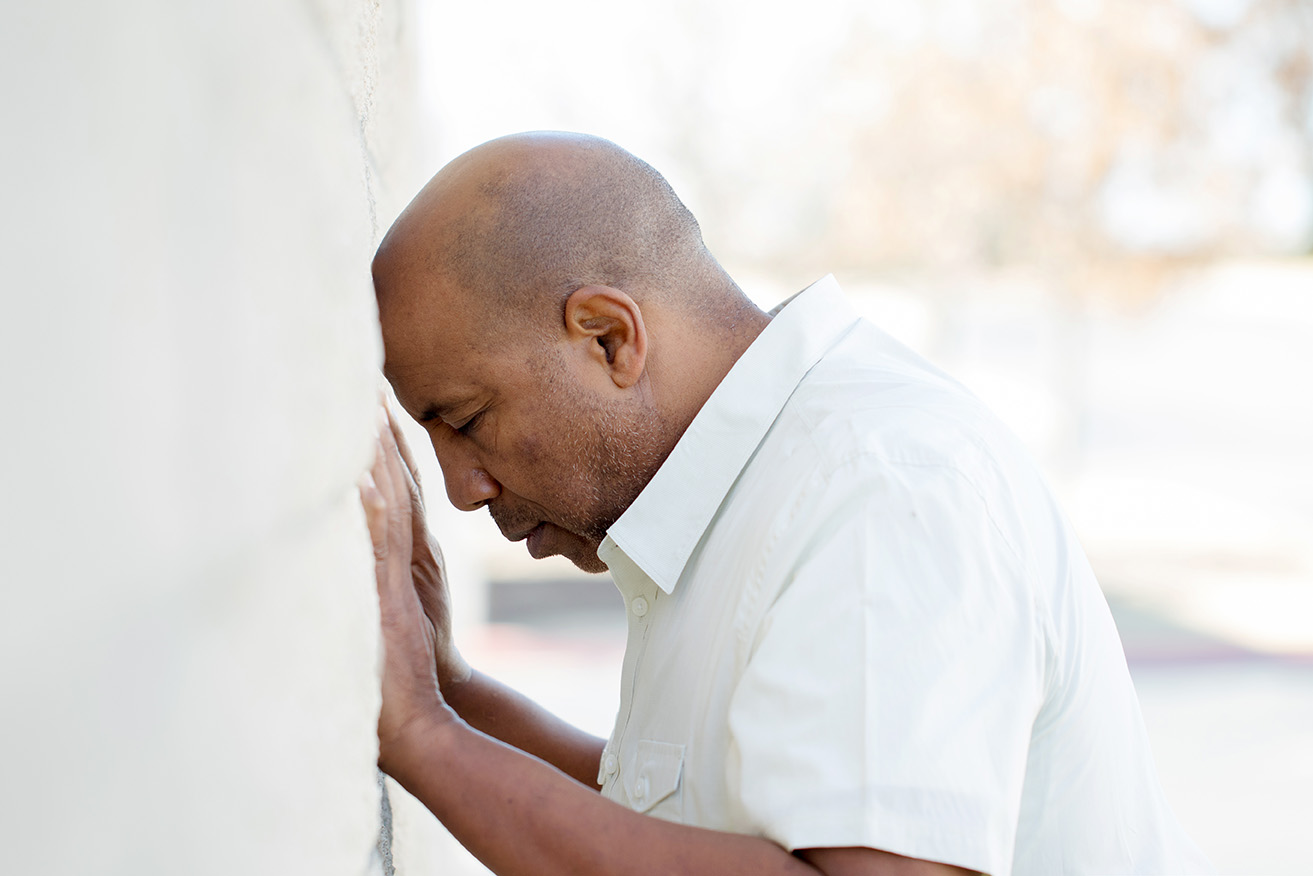Dual diagnosis refers to the condition of a co-occurring substance use and mental health disorder. Many addiction problems exist in relation to a mental illness, either as a cause or an effect, and this happens in reverse as well; a mental illness can often contribute to the development of drug abuse.
Dual diagnosis addiction treatment requires specific methods to address both the effects of the addiction and the underlying mental health conditions that drive it.
What Is Dual Diagnosis Addiction Treatment?
Psychology Today explains that people who meet the criteria for a dual diagnosis have both a mental health or mood disorder, such as depression, an anxiety disorder, or bipolar disorder, and an addictive disorder. The disorders are separate but related; the degree of overlap can be very complex, which requires the treatment to be similarly nuanced.
A dual diagnosis is also known as co-occurring disorders. These terms generally describe the same condition, but there are debates over how accurate and encompassing they are in referring to those who have a mental health disorder while abusing chemical substances and/or engaging in harmfully compulsive behaviors.
How Common Is Dual Diagnosis?
People who have an overlapping addiction and mental health condition account for a large share of the general population of people who have severe mental illnesses. As far back as 1996, the Journal of Mental Health Administration found that anywhere between 17 percent and 63 percent of people who were diagnosed with a mental health problem also abused substances.

Other research published in the Schizophrenia Research journal, has found that the co-occurrence of addiction by people who have schizophrenia was about 50 percent in the United States, meaning that essentially every other person who meets the diagnosis for schizophrenia abuses drugs and/or alcohol as a result of their condition.
Some scientists have speculated that the reason behind the high rate of overlap between schizophrenia and substance abuse is “deinstitutionalization and a reflection of social norms,” or, in other words, people with co-occurring disorders spend more time in their communities than they do in hospitals, and they are exposed to more risks and temptations (such as increased access to drugs and alcohol) than they would be in a secure treatment environment.
Without proper medical supervision, there are more opportunities for them to abuse chemical substances as a compulsive expression of their mental health problems. Yet other research has examined the influence of genes on the development of co-occurring schizophrenia and addiction, and how this combination might be passed down via bloodlines.
Identifying a Dual Diagnosis
The challenge facing patients and their doctors is that co-occurring disorders can develop over a long period of time without an appropriate diagnosis. This is due to the complexity of symptoms; it might be very difficult, or even impossible, to tell where the addiction ends and the mental health issue begins.
In the past, patients struggled because doctors would only observe and treat one part of the dual diagnosis. Isolated treatment carries a reduced chance of long-term recovery.
The symptoms of co-occurring disorders are very different because there are dozens of different combinations of substance use disorders and mental health disorders that can manifest in any number of conflicting and unexpected ways. It is very rare to find a straightforward presentation of dual diagnosis symptoms that directly implicates an addiction or a mental health issue with a high degree of certainty.
Nonetheless, there are some red flags that health care practitioners will look out for if they have reason to suspect that a patient has a dual diagnosis.
- Uncharacteristically impulsive or risky behavior (to continue the habit)
- Withdrawal symptoms from drug or alcohol abuse
- Unpredictable changes in mood and behavior
- The inability to function or feel normal without alcohol or drugs
- A loss of interest in social, work, or academic activities
- Being very protective or in denial of drug or alcohol use
Dual Diagnosis and Self Medication
People who are struggling with an addiction to chemical substances or harmful behavioral problems (such as compulsive eating, gambling, or shopping) will also likely have a co-occurring mental health disorder that corresponds in some way with their other condition. For example, they may compulsively eat to quell their anxiety disorder or drink to cope with their depression.

This symptom of co-occurring disorders is known as self-medicating, where the person attempts to control or escape the effects of their mental health condition by taking a chemical substance with a psychoactive effect. However, self-medication is rarely, if ever, truly therapeutic. The person might feel temporarily better, but the action does nothing to genuinely treat the dual diagnosis and merely increases dependence on the drug.
Additionally, continued self-medication increases the body’s natural tolerance for the substance. The body adapts to the relentless chemicals flooding the brain, or even the body’s own endorphins or neurotransmitters if the self-medication is behavioral, so much so that standard exposures no longer have the desired effect. This elevation of the threshold is known as drug tolerance.
As the body grows increasingly tolerant of a drug, the person will have to take more of the drug to feel sufficiently at ease. The problem is that the underlying mental health issue never gets addressed, and the need for more drugs is allowed to reach very dangerous levels.
Integrated Dual Diagnosis Addiction Treatment
A person who has a dual diagnosis needs treatment that addresses both conditions simultaneously and treatment that understands how changing an addiction changes mental health balance. This means that an appropriate treatment program has to take into account the lifestyle decisions that are made as a result of the impaired cognitive functioning that comes with a dual diagnosis. The best kind of program to help those with co-occurring disorders is an integrated treatment program.
Integrated (or integrative) treatment gives clients a wide range of services that provide recovery on multiple levels. Services should be specific to speak to the individual needs of clients, but they will also include resources that work toward necessary lifestyle changes to ensure long-term progress.
These can be methods that focus on:
- Sleeping patterns and habits
- Interpersonal and communication skills
- Dietary and nutritional behaviors
- Improving family relationships and dynamics
- Teaching job skills and workplace-related concerns
- Offering workshops on legal issues
The purpose of integrated treatment is to give clients everything they need – from medical detoxification and psychological therapy to life-skills training and peer support – to get back on their feet, to re-engage with life from a healthy perspective, and to make the most of their recovery.
Dual Diagnosis Treatment for Withdrawal
An integrated treatment program gives the client a unique treatment plan since every presentation of a co-occurring addiction and mental illness looks different from one person to the next. Generally, such a plan will include medical detox, which is a period of a week (or longer, as necessary) for the body to wean itself off physical dependence on the alcohol or drug being abused. Medical detox results in withdrawal symptoms, often painful and distressing, as the body breaks the physical hold of the chemical substances that have been dictating hormone responses for months or years at a time.
Depending on the kind of drug being abused, withdrawal can even be life-threatening if it is carried out without proper medical supervision, so it should not be attempted without the care of doctors who can intervene if symptoms threaten vulnerable body systems. The intervention usually involves administration of anti-anxiety or antiseizure medications in the event that the withdrawal symptoms cause severe physical risk or psychological distress.
Completing medical detox renders the person ready to begin therapy, which addresses the mental health damage caused by the addiction and the mental illness itself and the underlying causes of the substance abuse. Therapy is a vital part of the treatment process. Simply getting over the physical hold of the addiction, without guiding the person through psychological healing, almost certainly sets them up for relapse.
Dual Diagnosis Addiction Treatment: Evaluation, Diagnosis, and Therapy
An integrated treatment plan addresses the psychological component behind a diagnosis of co-occurring disorders. The evaluation process identifies the specific mental health issues, and their respective presentations, that are affecting the client. This leads to the follow-up to evaluation, which is the diagnosis. This part of the process helps the client gain an understanding of how and why the mental health components work as they do, which plays a big role in developing a treatment plan for the future.
There are many kinds of psychological therapies that can be used to help a client with a co-occurring addiction and mental illness, such as cognitive-behavioral therapy, dialectical behavior therapy, acceptance and commitment therapy, and motivational interviewing, among many others. The one to use depends in large part on what health care professionals feel is best based on the information obtained from the evaluation and diagnosis. The details of the plan will be completely unique, made to fit with the client’s family history, lifestyle, mental health state, form of substance abuse, and any other factor that has a role to play in the treatment.
The cornerstone of therapy is one-on-one meetings between the therapy and the client. This gives the client a safe and private space in which to discuss everything from past traumas to current difficulties and goals for the future. The treatment plan may need to change based on the success and struggles the client experiences, so establishing a good relationship with a therapist provides a foundation for the flexibility and growth of overall recovery.
Group and Family Therapy at a Dual Diagnosis Treatment Center
Another important part of integrated treatment is group therapy, where the client hears from other people who have had the same problem, have experienced similar treatments, and are living in recovery themselves. These groups, usually based on the 12-step model made famous by Alcoholics Anonymous, provide support, accountability, and solidarity. Recovery can sometimes feel lonely and confusing, and having people who know what that is like, and who speak the language that only people in recovery will understand, goes a very long way in helping a person establish a new life.
Similarly, family therapy helps clients rebuild and improve their relationships with their loved ones. If the client will be returning home to live with family members and loved ones, it is very important that all members of the inner circle (which might include extended family, romantic partners, and good friends) are made part of the healing process. This might mean understanding how the dynamics of communication and expression were damaged by the addiction or helped exacerbate the mental illness, and how they can be repaired in the future. The goal is to prevent relapse and help the person overcome a relapse if it happens. So important is the concept of therapy for the whole family, that The Fix calls it “essential to recovery success.”
Before the integrated treatment program ends, clients work with their therapist to create an aftercare plan. This will be a unique mix of goals, services to make those goals attainable (such as getting a job and going to skill-building classes), and outpatient services that can be used to continue mental health and substance abuse rehabilitation as part of their independent life.
As many as nine million Americans live with co-occurring addiction and mental illness, according to the Substance Abuse and Mental Health Services Administration, but less than 7.5 percent of them receive the treatment they need to control their addictions, manage their behavioral disorders, and live a fulfilling life. Dual diagnosis treatment is very possible, and it is the answer for those who struggle with the burden of a substance use disorder and a mental health imbalance.
